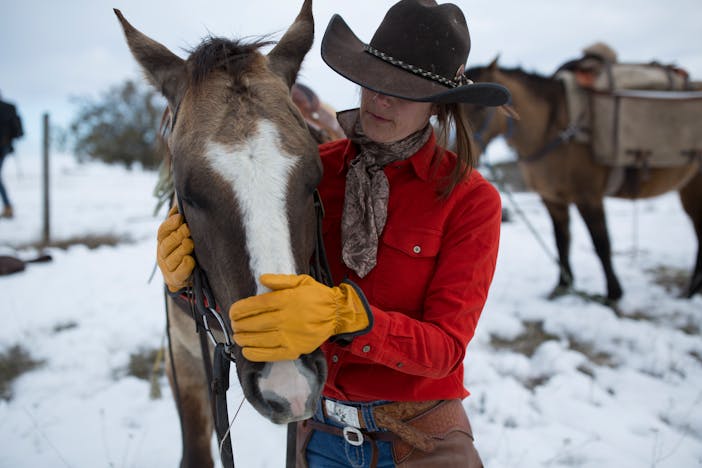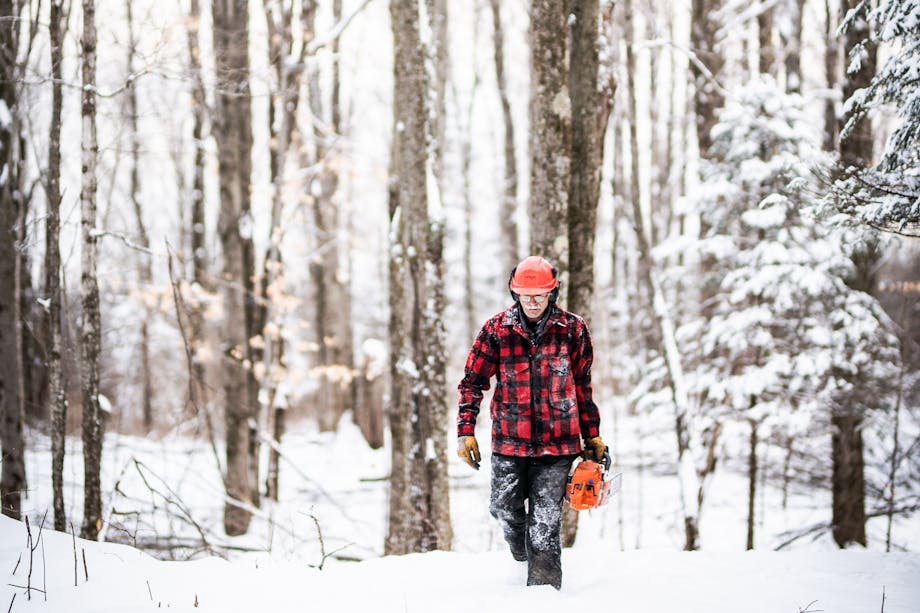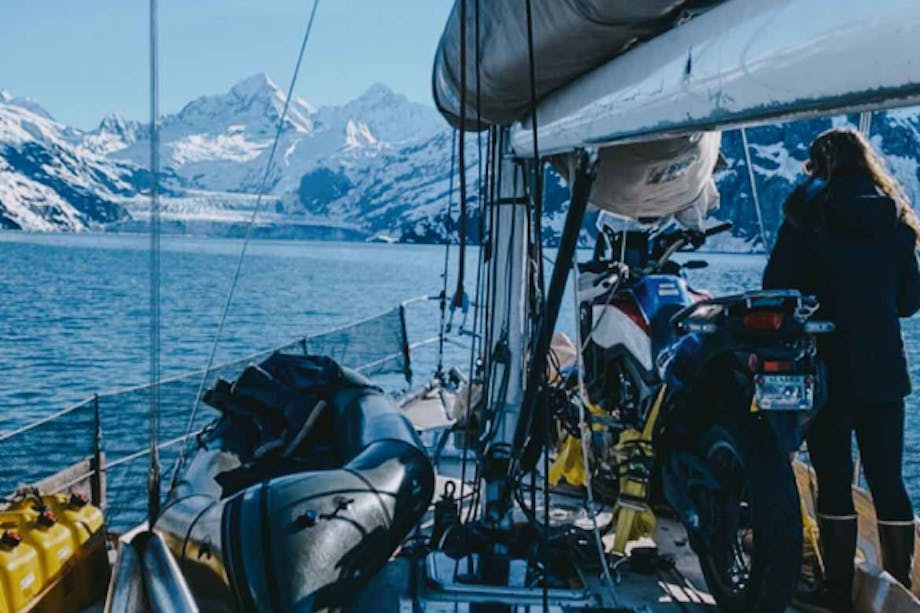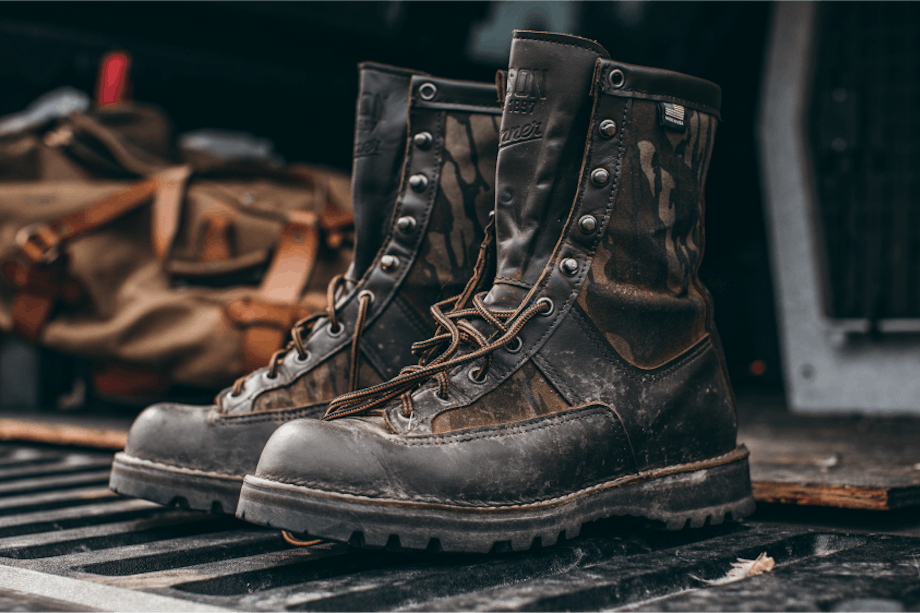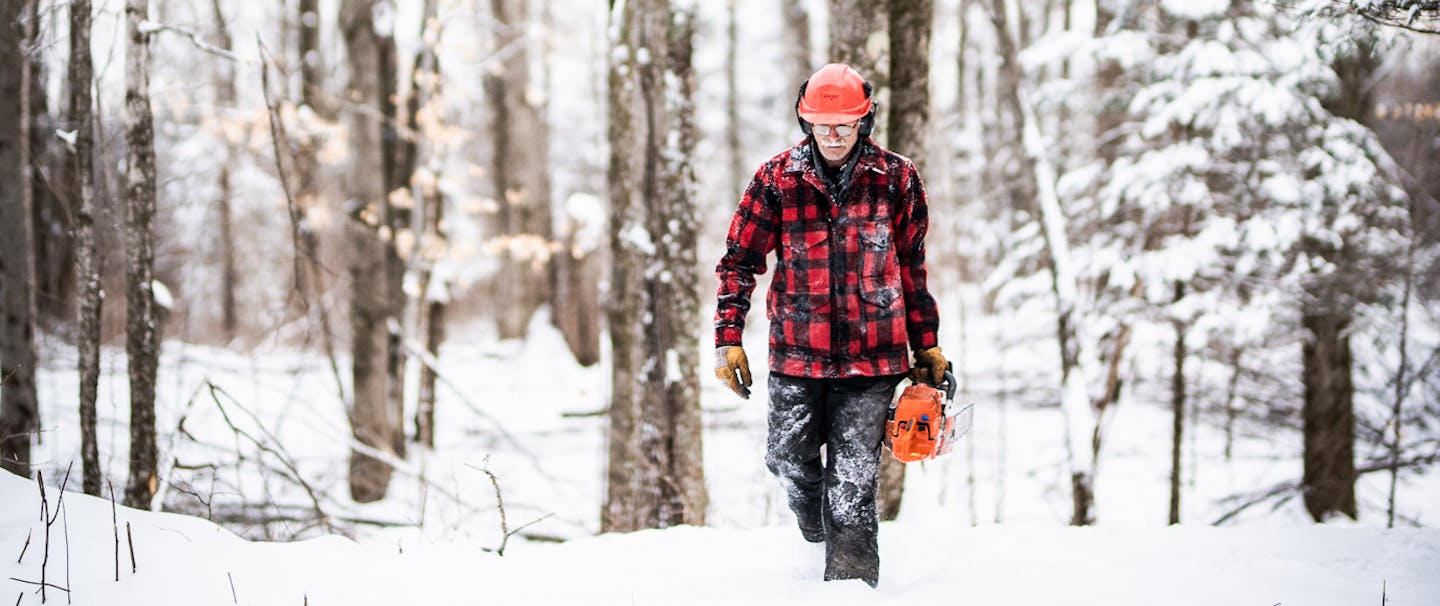For Adam Foss, a filmmaker who also happens to be the youngest hunter in the world to have killed all four species of North American wild sheep with a bow, and Frankie Foss, who feels at home both behind a camera and in the backcountry, the film is about more than just Edinger’s 2007 accident. It’s also a character study about the complexities of a sixth-generation homesteader who logs, hunts, calls square dances, writes poetry, sings from the back of a horse, and most importantly, knows how to beat impossible odds.
The film opens with a white sliver of road, an icy forest, and a 911 phone call. On a voiceover, a logger explains his predicament: He’s alone in the Northern Wisconsin wilderness, it’s below freezing, and a tree just crashed down on him, taking his left leg with it. That logger is the man at the center of Will to Live: The Gary Edinger Story, the latest film from Adam and Frankie Foss, the husband and wife team behind Foss Media.

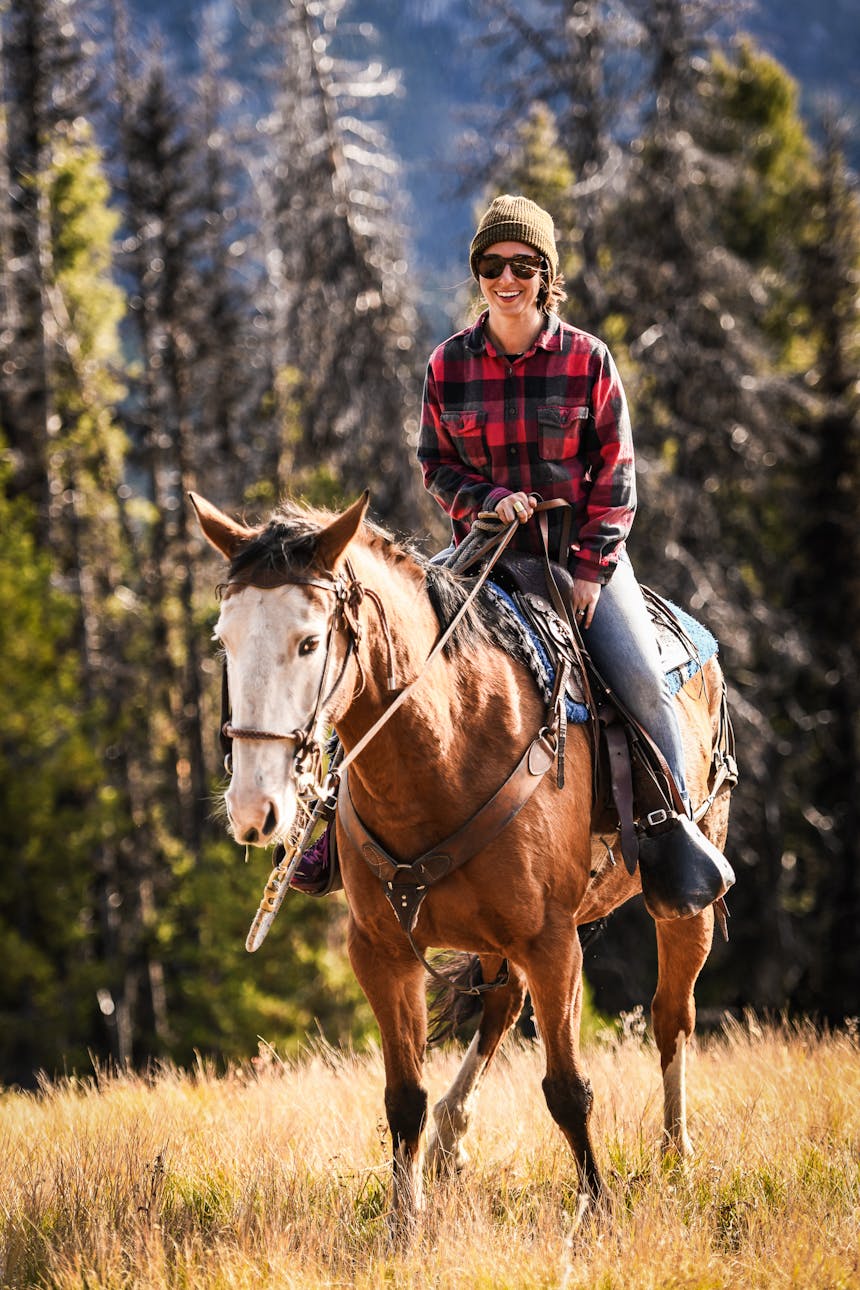
Q: What was your journey to becoming filmmakers?
Adam: I was working as a photographer for an agency for outdoor and hunting brands. At the time, video was at the crossroads where DSLRs could be used to shoot videos and photos at a reasonable cost and a pretty high quality for the average consumer, so I slowly started shooting video as well. And now, Frankie and I have been off on our own for a couple of years. One of the big reasons for starting our own company was to take on projects that have a little more meat on the bones and are hitting a message that speaks to us and that we think will speak to other people.
Q: How has the outdoors, hunting, and conservation influenced you as filmmakers?
Adam: It allows me to be an advocate for hunting in wild places and for protecting the different ecosystems and habitats that we like to play in. We get to experience them and bring them back through the camera to show the world.
Frankie: We both want something that feels authentic to our world, our perspective, and what we know. And although Gary came from a world that is very different from ours, we have a common passion and are both drawn to the outdoors.
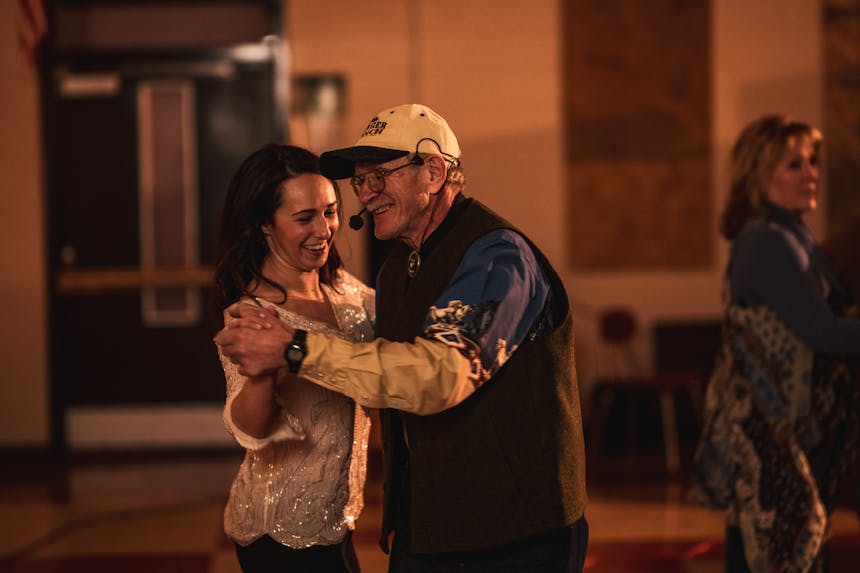
Q: How did you hear about his story?
Adam: There’s a still photographer on the project named Sam Averett who is an avid hunter as well, and he actually met Gary in the backcountry. He started chatting with him and realized he had read his book. They became pen pals and one day Sam said, “Hey, I’m going to pitch this story to Filson.” Later, working with one of the marketing guys at Filson, it seemed like there was a lot to the story, so they decided to give it the film treatment. That’s when Sam brought us in, and for us, one of the turning points when we were developing the story was the 911 call. We listened to it and immediately were like, wow that’s a remarkable piece of audio, and we knew that it could be the backbone to the tension in a film like this. So we just had to dive in.
Q: How did Gary’s autobiography help shape your film?
Frankie: It gave us a jumping-off point. We already knew a lot of Gary’s background and history, so we could start ahead of the curve instead of at the very beginning. This meant we were able to ask questions at a more advanced level.
one of the turning points when we were developing the story was the 911 call. We listened to it and immediately were like, wow that’s a remarkable piece of audio, and we knew that it could be the backbone to the tension in a film like this. So we just had to dive in.
Q: How do you think Gary’s life as a sixth-generation homesteader in rural Wisconsin prepared him to survive the day of his accident?
Adam: They’re just cut from a different cloth, these guys. Gary grew up with no running water. We went out with him and filmed him as he’s just throwing around logs. If you look at him from behind, you wouldn’t know if he was 30 years old or 60 years old. He walks with a bit of a limp, but he gets around as good logging as he does elk hunting. He works outside every day of the year. He had the mental side of it too. He’d been in tough situations before. He’d spent a lot of time alone and had close calls before.
Q: Gary is a logger, an environmentalist, a hunter, a poet, a singer, and a square dance caller. Was it important to you to show how multi-dimensional he is?
Frankie: He is this rough and tough man who works in a solo, male-dominated, tough industry and then he has this softer, creative dynamic with his poetry. He was always singing on the trail and while he was chopping wood, and that felt like so much a part of him.
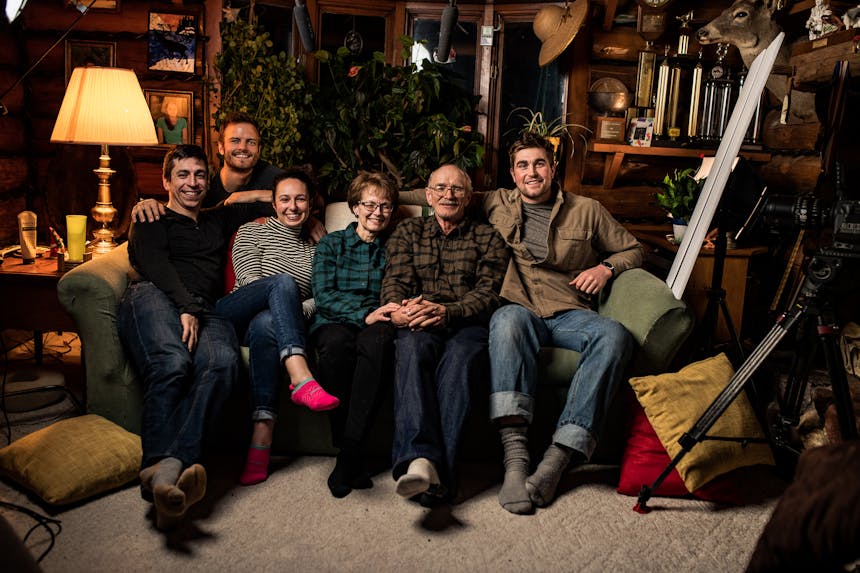
Q: What do you hope people get from watching the film?
Adam: If you sit on the couch, nothing’s going to happen. And with that, sometimes you encounter things that you can’t account for. Hell, Gary can laugh about cutting his own leg off and just chalks it up to “shit happens!” I think a lot of people would consider that reckless, but he isn’t reckless, he just has such a positive attitude. For us personally, that’s changed our lives. A person’s attitude like that is very infectious.
Frankie: When things are hard, I hear him in my head now and I kind of have to measure up. I think to myself, if Gary is getting around out there with one leg and having the best time, then these things bothering me really aren’t that bad after all.


